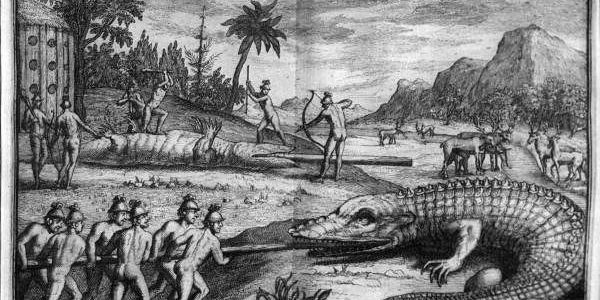About the river
Longest River in Florida
The St. Johns is 310 miles long from where it begins to flow near Ft. Drum Creek to where it confluxes with the sea east of Jacksonville. However, if its three major tributaries (Wekiva, Econlockhatchee, Ocklawaha) and all of the “dead rivers”, sloughs and branches are calculated, the entire “river system” would amount to many hundreds of miles.
River of Lakes
The St. Johns flows through an ancient intracoastal lagoon system. As sea levels dropped, barrier islands kept water from flowing east to the ocean. Rainwater collected in the shallow valley and slowly flowed northward. Springs now join the river along its midsection, adding to the chemistry and the momentum. Because of its sight gradient, though, tides usually push in as far as Lake George, and during drought, into Lake Monroe. North winds can easily overwhelm the less powerful tides in those regions.
The geology of the broad basin helps create conditions in which the river often dilutes or spreads out into “lakes”. The Creeks called the St. Johns “Welaka” (River of Lakes) for this reason. The sluggish flow of the river also makes it more vulnerable to pollution since its ability to flush sediments is diminished. Except for the spring runs or creeks, which can be very clear, the river is generally tea-colored from tannins of wood and decaying vegetation.

The Ancient Dwellers
Pre-Columbians camped and lived along the river for up to 12,000 years, leaving behind islands and shorelines full of shell middens. The St. Johns was the first river to be explored by Europeans. The French sailed into the mouth of the river in 1562 and set up a colony at Ft. Caroline. The Spanish, and later the British followed. Steamboats begin bringing supplies and tourists up the river in the mid-19th century. Early visitors included artists and writers who left behind a rich legacy of paintings, books, and music---which continues even today.
As steamships were replaced by railroads and then highways, the river lost a lot of its utility and prestige earlier in the 20th century. In the last several years, residents and tourists are re-acknowledging the true values of this ecological treasure.
Copyright © 2020 Alligator Princess - All Rights Reserved.
Powered by GoDaddy Website Builder